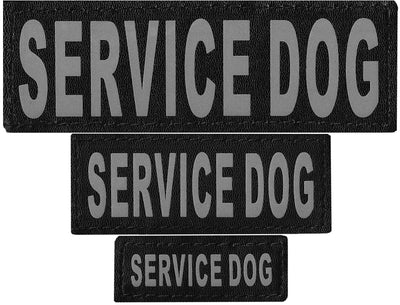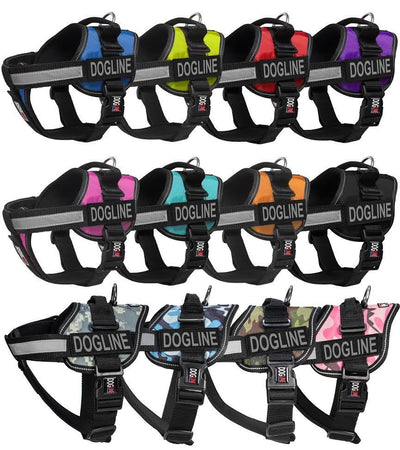While travelling or just out in public, you may have seen or encountered people who are traveling with their dogs on a leash, instead of boarding them for the duration of the trip, or transporting them in a crate. Or maybe they have dogs in public places like stores or restaurants. These people are allowed to do this because these dogs are what are known as “Service Dogs.”
So...what exactly is a “service dog?”
The Americans with Disabilities Act defines a service animal as a dog that has been specifically trained to do work or perform tasks for a person with a disability, that are directly related to that individual’s disability. This means that the dog must have been trained to take a specified action when required to help the disabled person.
For example: A person with severe depression might have a dog to remind them to take their medication. Likewise, a person who suffers from epileptic seizures may have a dog that is trained to recognize the symptoms of the onset of a seizure, and is trained to keep the individual safe should a seizure occur.
For this reason, dogs that have NOT been specially trained to perform a job or task are not considered to be service animals. These animals may still help in other ways, often these animals are used to comfort an individual in times of high stress. However, these animals are considered to be emotional support animals or therapy animals.
The ADA makes this distinction: If a dog has been trained to recognize when an anxiety attack is about to occur and take action to prevent an attack or to mitigate the effects of an attack then it IS considered to be a service animal. If the dog provides comfort just by being near their owner, it is NOT a service animal.
While this is the case, some places may have state or local laws that WILL allow people to bring their emotional support animal into shared public spaces. It is important to research your town’s policy on this and make sure to follow the local laws.
The ADA does NOT require service dogs to be professionally trained and allows the dog’s handler to train the animal themselves. Additionally there is no stipulation in the ADA that requires a service animal must wear a vest, I.D. or specific harness that identifies them as a service animal. Service animals are however required to be leashed and under the control of their handler at all times.
Dogline is a company that makes leashes specifically for this purpose. Not only are their leashes made from a strong, durable nylon but they also feature reflective lettering down the length of the leash that tells passersby that the dog at the other end of the leash is a service dog. This kind of ready identification will keep people alert and respectful of the needs of not only the dog, but the owner as well. The leash also features a heavy duty metal buckle that will stand up to the rigors of owning a dog, and will keep the Dogline leash serviceable for many repeated uses.
Dogline also makes other products for the purpose of identifying a dog as a service dog such as durable nylon collars with quick release buckles that also feature the same reflective lettering as their leashes. However these collars have the additional feature of allowing the user to remove the lettering when the dog does not need to be identified as a service dog, through the use of removable patches that affix to the collar. Dogline also allows customers to customize patches that will stick to the collar as well so that each customer gets an individualized experience that will uniquely fit their specific needs.
In addition these patches also fit on the Dogline breathable mesh service vests as well as the Dogline utility bag that is designed to attach to the vest so that the dog will be able to carry any necessary medical supplies for their owner, in the event of an incident while in public or abroad.
While it is not a law that a service animal must wear identification, it is still advisable to have some way to denote that the dog is indeed a service animal and should be treated as such.
It may seem tempting to some owners to simply get their dog a harness or leash that misrepresents their dog as a service animal when it is not specially trained and is not considered to be a service animal because they want to bring their dog places a dog would not traditionally be allowed. Under the guidelines set forth by the ADA, service animals have had a great deal of training to act appropriately in public spaces. Misrepresenting a dog as a service animal is not only selfish and disrespectful to people with legitimate need for a service animal, but can also cause problems if the dog does not know how to stay calm in a stressful environment and acts out.
Most obviously, by bringing untrained dogs into a shared public space, makes life more difficult for owners of legitimate service animals and their dogs to be accepted in these spaces. Untrained animals could act out aggressively toward other animals and could become dangerous in a situation with a legitimate service animal. If a dog’s owner is worried an untrained animal might attack their service animal, the service animal cannot focus on the needs of their handler which could create potentially life threatening circumstances for a disabled person.
Aside from that, 25 U.S. states have passed laws in 2019 that now make it illegal to claim a pet as a service animal without the proper certification. However there is no federal law on the books that prevents this, which is why it is so important to be honest and not present your dog as a service animal when it is not one.
Service dogs perform specific tasks that make life easier and safer for their disabled owners. Some service dogs may even prevent the loss of a life one day. Should a life threatening situation arise it is important that other untrained animals are not in the way. Do your part to prevent situations like this from occurring by leaving the dog at home if you KNOW they are not a service animal.






















I loved this article with its simple and clear explanation of a true service dog. I have a certified therapy dog and I see so many people trying to pass their emotional support dogs as service dogs and they are ruining it for those who truly have service dogs.
Leave a comment